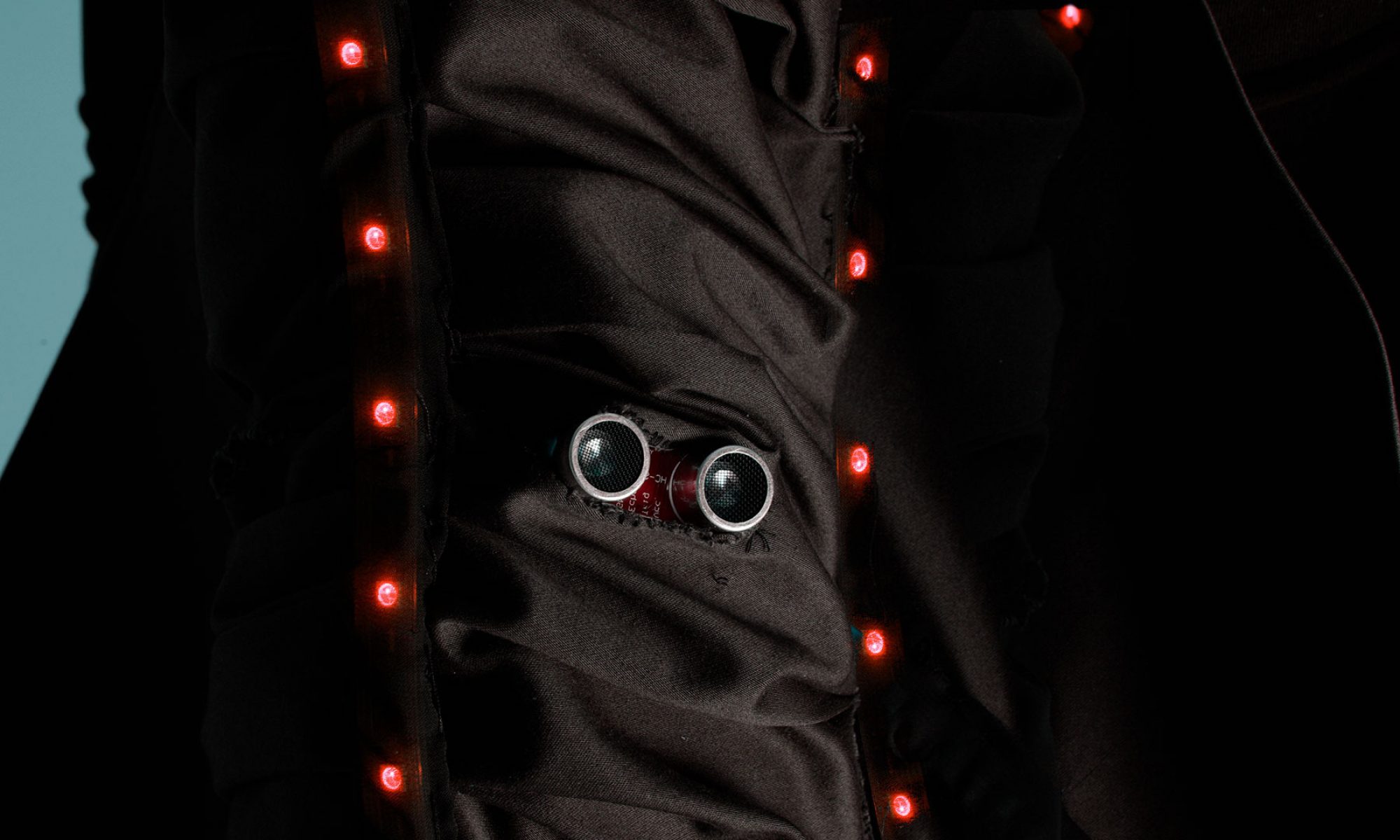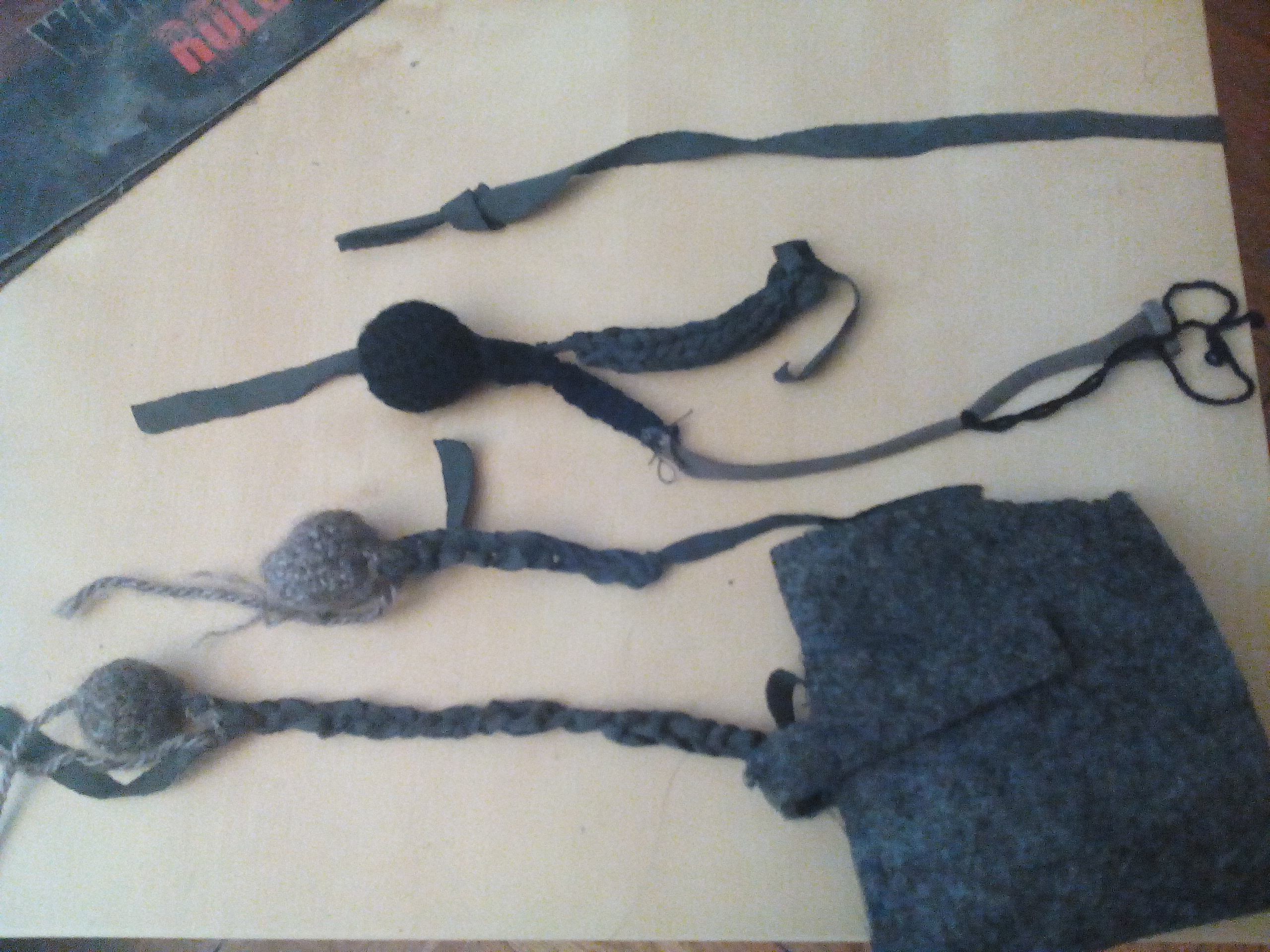After reading this article on textile accelerometers on kobakant.at we decided to try and make our own textile accelerometers.
An Accelerometer (in German: Beschleunigungssensor) measures proper acceleration, also called g-force. Thus an accelerometer at rest should measure an acceleration of 1g = 9.81 m/s². (see also wikipedia:accelerometer
Our textile sensor does not work as an accelerometer in ways of measuring proper acceleration. It does however measure movement. Our sensor is built from a chord of resistive fabric and a steel marble as a weight at the end. When moved the weight should follow the movement thereby stretching the chord. This changes the resistance created by the fabric which makes the movement measurable.
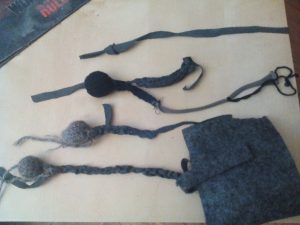
A single strap of fabric wears out very fast so we considered different ways to make the chord more durable.
The first attempt was to knit the chord using a so called “Strickliesl”. This produces pretty and durable chords but the object needed to stretch the chord has to be very heavy. Since the sensor should be attached to to a costume and swing freely a heavy weight could be very dangerous because it might hit something or somebody.
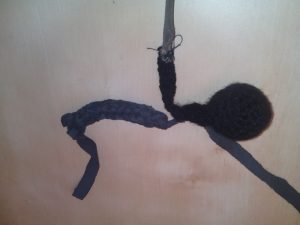
Crocheting the fabric gave us good results: the fabric was stretchy enough to use the steel marble as weight, but still seems durable.
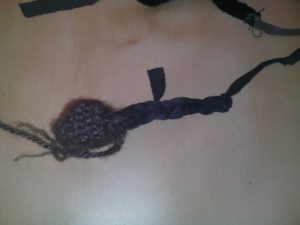
We built two crocheted sensors: a long one (15 cm) and a short one (7 cm). We then measured the resistance of our sensors with the Lilypad. The results were disapointing. Both sensors produced a lot of noise in the measurements even when held still. If moved, the long sensor just produced more noise making it nearly impossible to read anything from the data collected by the Lilypad.
The short sensor was connected to a piece of felt that was supposed to restrict its movement along one axis. 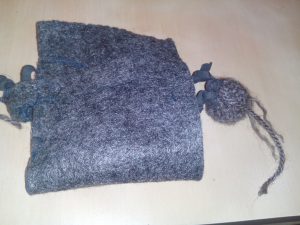
this constrict worked fairly well. It allowed only small movements on other axes. To restrict the movement even further it might be helpful to move the weight in some kind of track. Or in a stable pocket that is not affected by the movement of the chord.
The short sensor produced readable data showing distinct peaks (see video below). But it is not discernable if the peaks in data correlate with the peakpoints of the swing. The code used for the data readings was the analogRead sketch provided by the arduino software. It can be found here.
It can be said that if the weight/ the accelerometer swings the span between highest and lowest value read by the Lilypad grows. So it can be determined if the accelerometer is in motion compared to an earlier state where it was not moved.
Take away: Measuring acceleration with stretch sensitive fabric is very difficult. One can measure movement, and infer acceleration. But it seems more efficient to focus on measuring stretch of the fabric instead.
post by: Lynn
Music used in the video:Plastic Glare by Podington Bear is licensed under a Attribution-NonCommercial 3.0 International License.
Based on a work at http://soundofpicture.com/
